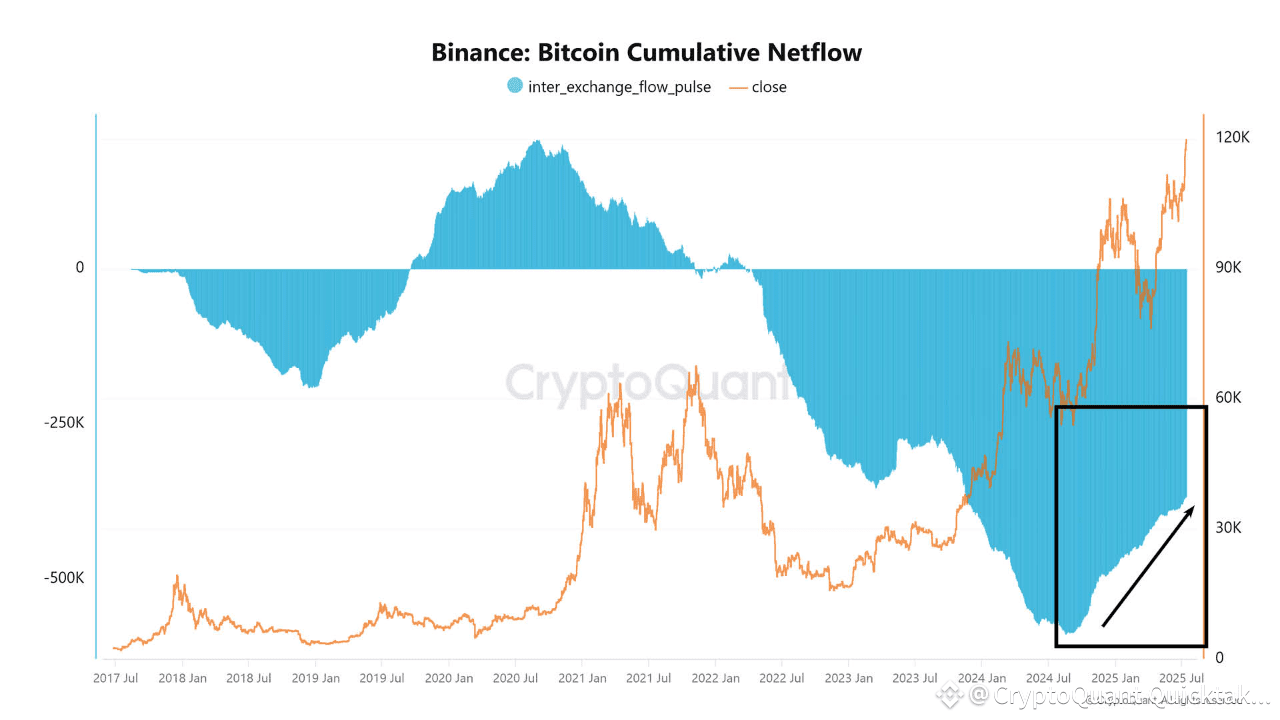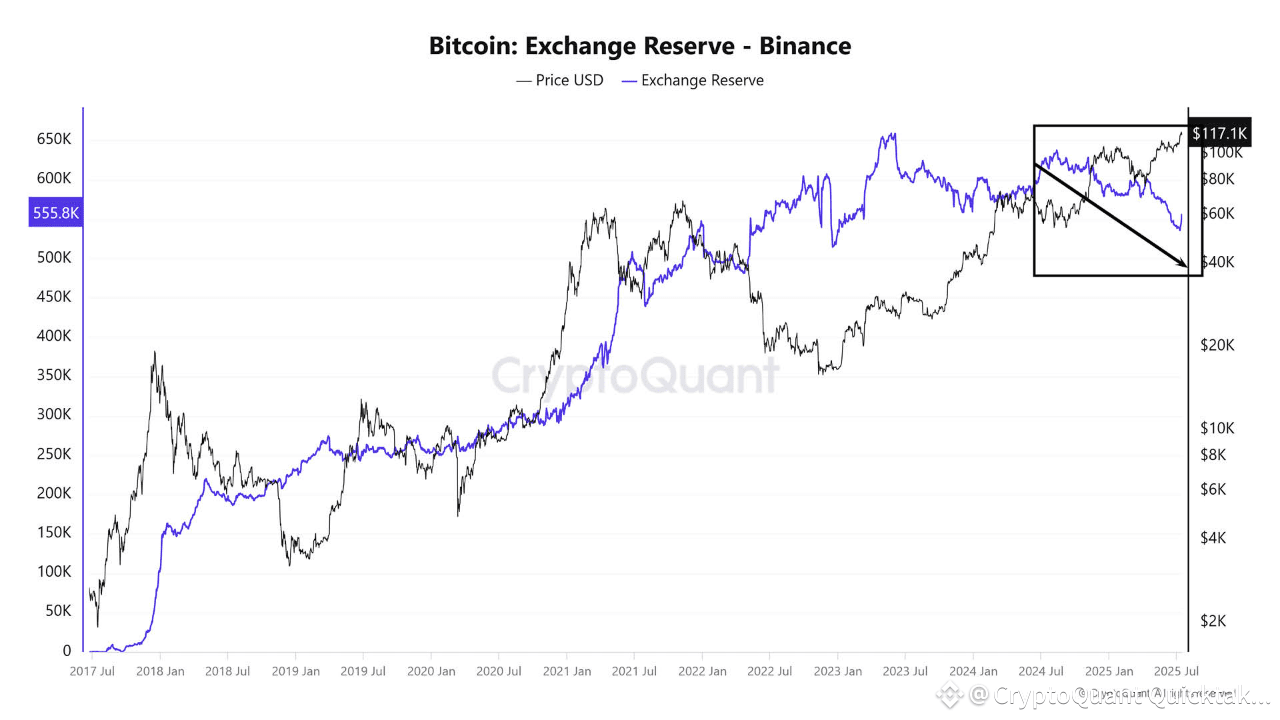In recent months, despite a positive cumulative netflow of Bitcoin into Binance—meaning more coins are being deposited than withdrawn—the exchange’s on-chain visible Bitcoin reserves have notably decreased. At first glance, this divergence may appear inconsistent, but it actually reflects Binance’s prudent risk management and enhanced operational strategy.
A primary reason is the increased transfer of Bitcoin to cold wallets for security purposes. Leading exchanges like Binance typically move substantial holdings into offline storage to reduce the risk of cyberattacks and internal theft. While this action lowers the on-chain, publicly trackable reserve, it significantly strengthens asset security and trustworthiness for users and institutional clients alike.
Moreover, this pattern may point to improved internal capital and liquidity management. Deposited Bitcoins might be allocated to specific investment products, such as Earn, Lending, or custody services, which are structured in ways that aren’t immediately reflected in standard exchange reserve metrics. As a result, even with continued inflows, the visible reserves decrease, while Binance’s financial ecosystem becomes more dynamic and responsive to market needs.
User trust is a major driver behind these flows. Many clients now prefer to keep their Bitcoin within the exchange, participating in various secure, long-term products rather than making frequent withdrawals. This signals strong confidence in Binance’s systems and its ability to manage user assets flexibly and safely.
In summary, rather than indicating liquidity stress or loss of customer confidence, the observed divergence demonstrates operational maturity, strategic security upgrades, and growing user trust. For the broader crypto ecosystem, such trends signal increased professionalism and a healthier, more robust market structure.


Written by CryptoOnchain

